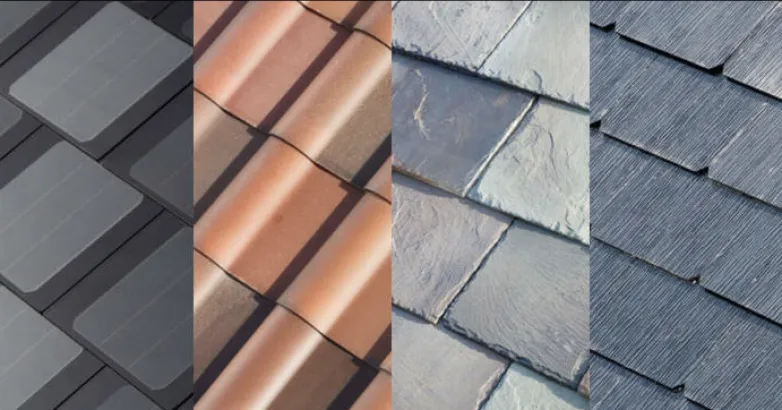Solar tiles for BIPV, are they worth it?
- Solar tiles are designed for buildings and make an integral part of building integrated photovoltaic or BIPV. They make buildings look more like they are designed to and not heavily loaded with electricity generators as in case of solar panels. At present solar tiles lack in their performance and costing when compared to solar panels, still some people use them.

Any residential, commercial or industrial building having solar panels on its roof or facade depicts the sustainable behavior of that structure. The solar photovoltaic technology has matured to a good extent and solar cells are being designed in different shapes and sizes. Solar tile also called solar shingle is just another type of solar cell technology presented in form of a roof tile.
Concept of tiles generating electricity on roof of a building is more of a home owner or building owner choice. If solar tiles would have been very efficient and cheap, they would have replaced solar panels, but not at present.
The working principle of solar photovoltaic tile or shingle is same that of a solar photovoltaic panel. In brief, it is the photons of sunlight striking the doped semiconducting material where extra or valence electrons in the material vibrate and jump from solar energy received to fill voids and vice versa, generating electricity.
Now in BIPV solar panels are also used which are placed or embedded on roof or facade of the building and generate electricity for that building or the grid. Solar tiles make the integration of this technology to the building as aesthetically pleasing. So let us discuss what is good about solar tiles and what not for BIPV.
Why solar tiles are not good for BIPV?
• The low efficiency of electricity generation of solar tiles as compared to solar panels is a major factor they are not much popular among the masses. CIGS solar tiles have shown comparatively better energy conversion levels but when compared to highly efficient mono-crystalline solar panels, at present they fail.
• Difficult installation of solar tiles on roof or facade of buildings is another drawback. Solar panels can be installed on any roof type as they are mounted on structure meant for it. To install solar tiles, old roof sheets or tiles need to be plucked out and then solar tiles are installed.
• On the same point of installation, all roofs are not suitable for solar tiles. Mostly slanting roofs with good support structure can endure installation of solar tiles. On flat roofs or terraced buildings again solar tiles will not integrate as solar panels do.
• Any roof tile when installed needs to be precisely joined to the adjacent tile to prevent any water seepage. Similarly, if solar tiles take place of traditional tiles they need to be precisely fitted together.
• In case of solar panels, they are mounted on roof or ground and can be shifted from one place to another with some effort. But in case of solar tile the roof is locked in with solar tiles and they cannot be or should not be taken out till it is generating electricity.
• Solar panel technology is quite mature and proven with lifespan of 20-25 years and more. Solar tile is a comparatively new technology and has not proven its durability. Companies like Tesla express its solar tiles to last for 30 years but they are still to be proven.
• Price of solar photovoltaic technology is reducing with time but solar tiles are expensive. The price of solar tiles is about twice the price of solar panels.
Why solar tiles are good for BIPV?
• Solar panels when installed on roof or facade of built structure protrude out of that structure. Solar tiles on the other hand make itself part of that built structure which complements the aesthetics of that building. Not everyone like solar panels on roofs of buildings but solar tiles becomes part of that building and colored tiles are also possible to install. Overall appearance of building with solar tiles is considered better than solar panels.
• Solar tiles are good if a new building is being designed and built. These can easily integrate to facade or roof of new built infrastructure. Also if old roof is to be replaced and solar system is considered with new roof installation, solar tiles can do work as a roof tile and also generate solar electricity.
• In roof mounted solar panels the structure gives space to birds and other small animals to enter and use space to live there. Solar tiles diminish the possibility for birds and animals to find living space under or around them.
• It is a new technology and makes a lifestyle statement for the building owner. With giving a badge of sustainable behavior to the building it adds to socially responsible behavior of the premises owner.
• Solar tiles can be installed at heritage and conserved sites where solar panels cannot be installed. Also at sites where solar panels installation is not possible due to area constraints or any other factors, solar tiles can be installed.
So solar tiles are worth for BIPV with a design perspective mostly and it depends on the owner of that building if to choose heavy, cheap and efficient solar panels or light, expensive and beautiful solar tiles.
Also read


